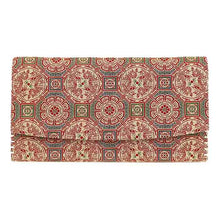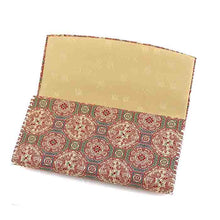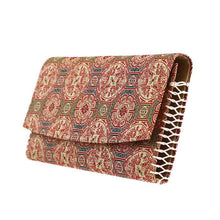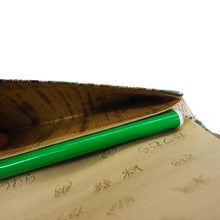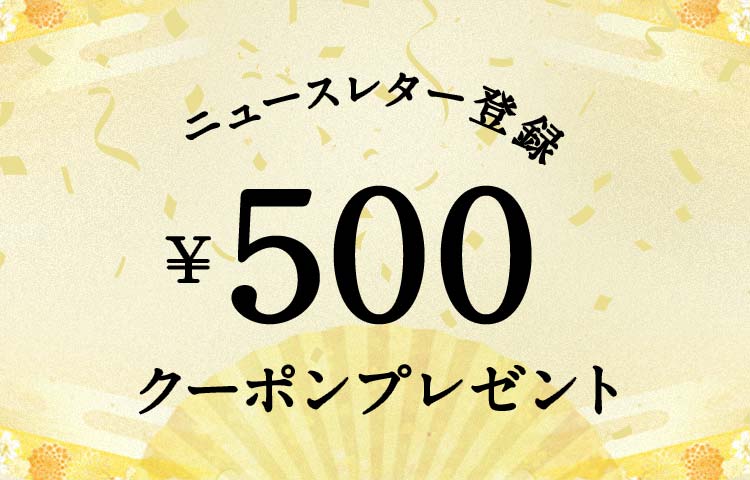Detail
| Product : | Kaishi Paper Container (Tea-things) (naragiresyokkoumon) |
|---|---|
| Type : | 懐紙入 |
| Size (cm) : | W18.5 x H10.0 x D2.0 |
| Tags : | 130th anniversary object-3、 Wrapping available、 Oriental Zodiac、 Pattern_Nara SAKI, Shokuben design、 Tea utensils、 Dragon、 dragon、 |
| Other : | The pattern may be different from the image shown due to the cutting process. Please understand this in advance. |
| Other : | Gift wrapping service available |
Reviews
Description
A small clutch bag for tea ceremonies.
Patterns
Nara-gire Shokkō-mon

The design is adopted from one of the best "Meibutsu-gire", famous textiles imported from abroad, mainly China, from the 14th century to the 18th century which were particularly popular among tea-masters and the upper-class people. It is an impressive geometric pattern on diapered ground which consists of a roundel enclosing 2 dragons fighting for a precious stone in the center and 8-petaled flowers in squares arranged at its four corners.
Although the original fabric named "Nara-gire Kinran" is a gold brocade having a pattern under Chinese influence which is effected with gold leafs on green ground, this piece is executed with warp-yarn composition in a sophisticated color scheme.





